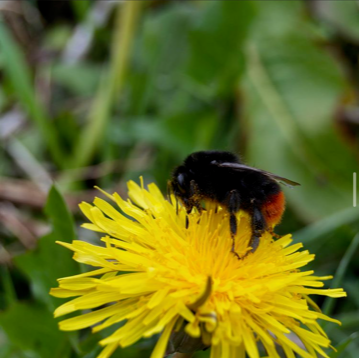Bee helpful, save our pollinators!
,
You know it’s spring when insects start to appear. I wasn’t too thrilled to be chased by a wasp the other week but I’ve enjoyed seeing their much friendlier cousin the bumblebee emerge from hibernation. The giant bees you see in early spring are queens. Once the temperature is warm enough, the queen will emerge from the hole in the ground in which she has been hibernating all winter and immediately seek out nectar to replenish her fat reserves. Next on her agenda is to find a new home where she can build a nest.
In the UK there are around 250 species of bee, 25 species of bumblebee, 224 species of solitary bee and 1 honey bee species. Unfortunately many of these species are in trouble. Over the last century, a combination of climate change, pesticides and loss of flower rich grassland has caused bee populations to decline.
We rely on bees to pollinate the crops that we eat. If bees were to vanish from the face of the earth humans wouldn’t be far behind them. Cumbernauld Living Landscape recognises the importance of pollinators which is why one of our projects “Nectar Networks” aims to create valuable flower rich habitat for bees and other pollinators. You can see some of these stunning wildflower meadows all across Cumbernauld at St Maurice’s Pond, Netherwood Way, Ravenswood, Cumbernauld Community Park and Carbrain Gully.
And you can help too. Whether it’s a garden or a window box you have, we can all do our bit for bumblebees. Our partner, Scottish Wildlife Trust have an excellent guide. https://scottishwildlifetrust.org.uk/activity/how-to-attract-bumblebees/
Alternatively you can help bees by volunteering with us, keep an eye on our social media pages for upcoming planting days this spring. To be added to our volunteer mailing list contact katie.brown@tcv.org.uk.

